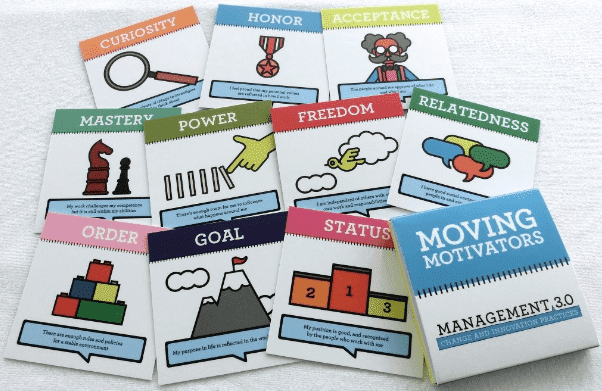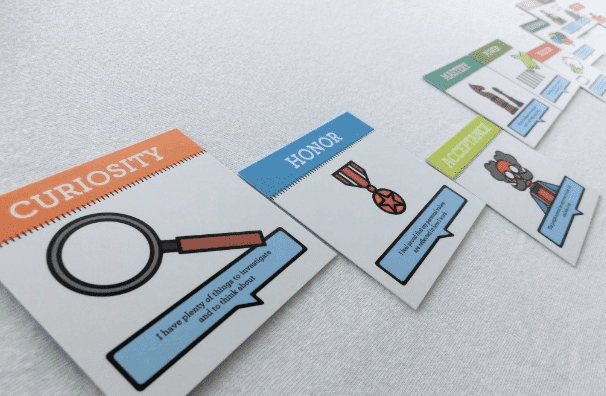Moving Motivators: Find Out What Really Motivates Your Team-EN
Victor Fairen
- Business Agility, Transformational Leadership
- Article
As part of every Management 3.0 course that we teach, we always ask, “What motivates your teams?” One of the most common answer is “money”. While people are partially right when they say that money is important, they might be unaware that using money as a motivator is not a good practice for teams.
Consider this scenario. You are working on a project whose delivery date was promised by someone higher up (without consulting your team) or changes to the project have been imposed without adjusting the delivery date. In either case, you are working on a project that is likely going to be late. Realizing this, a manager (Project Manager, Team Lead or CIO/CEO) lets the team know that if you can deliver on time, you will all get a bonus.
You and your team obviously do everything within you reach to complete the project by the agreed date and actually end up achieving the goal. Everyone gets a bonus, and the team celebrates! New projects arrive and you, again, meet the challenge of delivering a project for a difficult completion date. At some point, someone on the team asks, “Will there be bonuses for this project?” What if “no” is the response? The team is discouraged; the previously motivating factor is now a demotivator.
Personal Motivators: Extrinsic and Intrinsic
In fact, as Daniel Pink explains in his book Drive, money is important to the extent that people make enough for it to not be a concern. Money is an extrinsic motivator. Other motivators that are often a more powerful are intrinsic motivators that are based on one’s values and passions.
Moving Motivators
Management 3.0 proposes a model for managing both professional and personal motivations: CHAMPFROGS, also called Moving Motivators. This model is based on using intrinsic motivations and extrinsic motivations to discover what really motivates your team. The motivators are:
Curiosity
I have plenty of things to investigate and to think about.
Honor
I feel proud that my personal values are reflected in how I work.
Acceptance
The people around me approve of what I do and who I am.
Mastery
My work challenges my competence but it is still within my abilities.
Power
There is enough room for me to influence what happens around me.
Freedom
I am independent of others with my work and my responsibilities.
Relatedness
I have good social contacts with the people in my work.
Order
There are enough rules and policies for a stable environment.
Goal
My purpose in life is reflected in the work that I do.
Status
My position is good, and recognized by the people who work with me.
Motivation Though Gamifaction
The Employee Motivation game is a personal reflection exercise that asks people to sort, from left to right, a set of cards with these 10 factors that influence our professional and personal motivation. The cards towards the left are factors that influence the person the most, and those towards the right influence the person the least. It is not that the factors on the right don’t motivate us at all, just that the other factors influence our motivation more.

Moving Motivators is a simple and graphical exercise that only requires a little time of introspection on your personality and wishes when considering each of the motivating factors. The order of each person’s cards is then shared with team members to help everyone get to know each other better, consider their points of view, and influence one’s own motivations.
Changing the order of your cards once you hear others share their motivations happens more often than you might think. It is not about “These are my motivators and if they don’t like them, then I have others.” It’s about listening to team members’ reflections that make us reflect on ourselves in turn.
Moving Motivators in Real Life
In a previous role, as head of the Scrum Master department, I used this exercise not only within a team but also to help teams understand the rest of the department’s motivations.
This exercise was also extremely useful for me during the interview process. In just 10 minutes, I was able to understand what motivated the job candidate and gain insight into whether they would be a good fit for the open position. Because one motivator isn’t better than another, candidates can’t adjust their results to please the interviewer.

More on Personal Motivators
If you want more information on how to use them and to get a copy of the Moving Motivators deck, see the Management 3.0 website and/or watch this video (RSA ANIMATE: Drive: The surprising truth about what motivates us).
I hope this simple practice can help you determine how to best motivate the people on your teams!
– Victor
What motivates you?
Moving Motivators is just one of the unique and powerful practices from Management 3.0. See how Management 3.0 is an innovative solution for managing the system, not the people.
